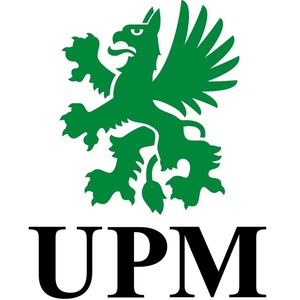UPM to develop next generation biorefinery

January 28, 2021
BY UPM
UPM moves forward with biofuels growth plans and starts the basic engineering phase of a next generation biorefinery. The potential biorefinery would have an annual capacity of 500,000 metric tons of high-quality renewable fuels including sustainable jet fuel. The products would significantly reduce carbon footprint in the road transport and aviation, as well as replace fossil raw materials with renewable alternatives in chemicals and bioplastics.
“The planned biorefinery would scale up UPM’s successful biofuels business to a new level. At the same time, it would further improve long term competitiveness and sustainability performance of UPM Biofuels by introducing several sustainable feedstocks and achieving uniquely high CO2 emission reduction compared to biofuels currently in the market,” says Jyrki Ovaska, chief technology officer of UPM.
Advertisement
UPM’s solid wood biomass-based residues and side streams would play a substantial role in the feedstock pool. In addition, it would consist of sustainable liquid waste and residue raw materials. “UPM has an excellent position and expertise acquired over the decades in biomass sourcing both in Finland and Central Europe thanks to our large-scale operations in the pulp, paper, timber and plywood businesses. We are also developing and testing innovative carbon farming concepts.”
UPM will now proceed with a detailed commercial and basic engineering study to define the business case, select the most innovative technology option and estimate the investment need. The technology concept includes the use of green hydrogen in the production process. During the study UPM will also review the operating environment primarily in two locations: Kotka, Finland and Rotterdam, the Netherlands.
The estimated duration of this basic engineering phase is minimum 12 months. If all preparations are concluded successfully, UPM would initiate the company’s standard procedure of analyzing and preparing an investment decision.
Advertisement
“The UPM Lappeenranta Biorefinery, with annual capacity of 130,000 tonnes, has been a showcase of creating a successful new business beyond fossils. Years of investment in R&D and innovation have paid off. This gives us confidence to plan scaling up this exciting business,” says Ovaska.
Related Stories
The U.S. EPA on May 14 delivered two RFS rulemakings to the White House OMB, beginning the interagency review process. One rule focuses on RFS RVOs and the other focuses on a partial waiver of the 2024 cellulosic RVO.
The U.S. EPA on May 15 released data showing nearly 1.79 billion RINs were generated under the RFS in April, down from 2.09 million generated during the same month of last year. Total RIN generation for the first four months of 2025 was 7.12 billion.
Calumet Inc. on May 9 announced sustainable aviation fuel (SAF) capacity at its Montana Renewables biorefinery is expected to reach 120 MMgy to 150 MMgy sooner than previously reported for a fraction of the originally expected cost.
Tidewater Renewables on May 8 announced that its 3,000-barrel-per-day renewable diesel plant in Prince George, British Columbia, operated at 75% capacity during the first quarter, up from 71% during the same period of last year.
Aemetis Inc. released Q1 results on May 8, reporting increased biogas production, progress with efficiency improvements at the Keyes ethanol plant, and resumed biodiesel deliveries. Financing activities are also underway for a proposed SAF project.
Upcoming Events










